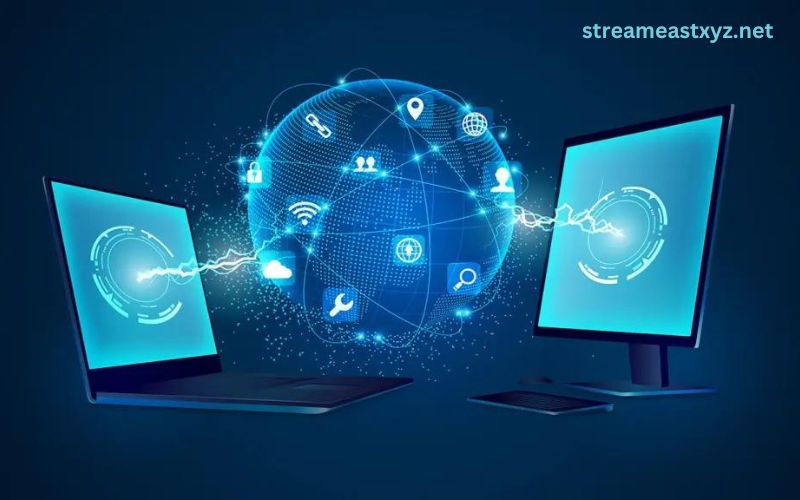Understanding IT is akin to learning a new language—one that enables you to engage with the digital environment more effectively. At its core, IT encompasses the use of computers, networking, and other physical devices, infrastructure, and processes to create, process, store, secure, and exchange all forms of electronic data. It’s not just about hardware and software; it’s the connective tissue that powers our modern world.
You might think that delving into IT basics is only for professionals or tech enthusiasts. However, grasping the essentials can empower you in your daily life, enhance your problem-solving skills, and even open the door to new career opportunities. It’s about cultivating a knowledge foundation that will serve you in an increasingly digitized future.
The Importance of Understanding Information Technology Basics
Grasping the basics of Information Technology is not a luxury—it’s a necessity in the digital age. Why? Because IT is no longer confined to tech-specific roles or industries. It pervades every sector, from healthcare to finance, education to manufacturing. By understanding IT, you position yourself to thrive in virtually any field.
Knowledge of IT basics can also safeguard your personal and professional data. Cybersecurity threats are on the rise, and an understanding of IT can help you protect sensitive information. By being IT literate, you can make informed decisions about the technology you use and understand the implications of those choices.
Moreover, understanding IT can streamline your work processes. Automation, data analysis, and electronic communication are just a few examples of how IT can increase efficiency in your daily tasks. When you know how to harness the power of IT, you can do more with less effort and stand out in an increasingly competitive job market.
Key Concepts in Information Technology
The realm of Information Technology is built upon several key concepts that together form the foundation of IT knowledge. These concepts include data storage, software applications, hardware components, networking, and information security. Each element plays a critical role in the functionality and efficiency of IT systems.
Data storage is the retention of information in a form that allows for easy access and use. This could be anything from a simple text document to complex databases. Understanding how data is stored, retrieved, and managed is crucial for ensuring that important information is always at your fingertips.
Software applications are the tools that allow you to interact with data and perform specific tasks. They range from basic word processors to sophisticated business analytics tools. By understanding different types of software and their applications, you can choose the right tools to meet your needs and enhance your productivity.
Hardware components are the physical parts of a computer system, such as the central processing unit (CPU), memory, and storage drives. Knowing how these components work together gives you a better grasp of how your devices function and how to troubleshoot them when issues arise.
Networking is the practice of linking computers and other devices together to share resources and information. It’s the lifeblood of the internet and internal systems within organizations. An understanding of networking principles helps you appreciate how data is transmitted and how to maintain secure connections.
Information security, also known as cybersecurity, involves protecting data from unauthorized access, use, disclosure, disruption, modification, or destruction. As cyber threats continue to evolve, a solid grasp of information security is essential to protect your personal and professional digital assets.
Types of Information Technology Systems
Information Technology systems come in various shapes and sizes, each serving distinct purposes. Familiarizing yourself with different types of IT systems can help you understand how they impact your daily life and work.
Enterprise Resource Planning (ERP) systems integrate core business processes such as finance, HR, manufacturing, and supply chain into a single system. These systems are vital for large organizations that need a unified view of their operations to make informed decisions.
Customer Relationship Management (CRM) systems help businesses manage interactions with current and potential customers. By understanding CRM systems, you can appreciate how companies track your preferences and purchase history to provide personalized service.
Content Management Systems (CMS) are used to create and manage digital content. If you’ve ever blogged or managed a website, you’ve likely interacted with a CMS. These systems simplify the process of publishing content online, making it accessible to a wide audience.
Lastly, Network Management Systems (NMS) are crucial for monitoring and maintaining an organization’s computer networks. An introduction to NMS can give you insight into the complexity of keeping networks operational and secure.
Common IT Terminologies and Acronyms
Navigating the world of IT can sometimes feel like wading through an alphabet soup of jargon and acronyms. However, understanding common IT terminologies is essential for effectively communicating and understanding tech-related conversations.
For example, terms like “cloud computing” refer to the delivery of computing services over the internet, allowing for on-demand access to computing resources without direct active management by the user. “Big Data” refers to the vast volumes of data that businesses collect, which can be analyzed for insights leading to better decisions and strategic moves. remote working.
Acronyms like “SaaS” (Software as a Service) describe a software distribution model in which applications are hosted by a third-party provider and made available to customers over the internet. “IoT” (Internet of Things) represents the network of physical objects—devices, vehicles, appliances—that are embedded with sensors, software, and other technologies for the purpose of connecting and exchanging data with other devices and systems over the internet.
By familiarizing yourself with these terms and what they represent, you can develop a better understanding of the IT conversations happening around you and contribute more meaningfully to them.

The Role of Information Technology in Business
In the world of commerce, Information Technology acts as a catalyst for growth, innovation, and efficiency. IT enables businesses to streamline their operations, reach new markets, and offer better customer service. Understanding the role of IT in business can help you grasp how companies leverage technology to gain a competitive edge.
Businesses use IT to analyze data and gain insights into market trends, customer behavior, and internal processes. This data-driven approach can lead to more informed decision-making and targeted strategies. For instance, retailers use IT to manage inventory more efficiently, while financial institutions use it to analyze investment opportunities and manage risks.
Moreover, IT facilitates communication both within companies and with external stakeholders. With tools like email, video conferencing, and collaborative platforms, teams can work together effectively, even if they’re spread across the globe. This connectivity not only boosts productivity but also supports flexibility and remote working arrangements.
Careers in Information Technology
The Information Technology sector offers a diverse array of career paths that cater to various interests and skills. Whether you’re a creative thinker, a problem-solver, or someone who enjoys helping others, there’s likely an IT role that aligns with your passions.
For those with a creative edge, roles like web developer or UX/UI designer might be appealing. These professionals are responsible for creating the look and feel of websites and applications, ensuring they are both aesthetically pleasing and user-friendly.
If you’re drawn to problem-solving, consider positions such as systems analyst or network engineer. These experts analyze IT systems and networks, devise solutions to complex technical issues, and ensure that infrastructure operates smoothly.
For those who enjoy supporting others, IT support specialist or help desk technician roles offer the chance to assist users with their tech problems. These professionals are often the unsung heroes who keep businesses running by resolving technical issues swiftly and efficiently.
Resources for Learning Information Technology Basics
Embarking on your journey to understand the basics of Information Technology doesn’t have to be daunting. Numerous resources are available to help you learn at your own pace and style.
Online courses and tutorials offer a flexible way to gain IT knowledge. Websites like Coursera, edX, and Udemy provide a wide range of courses taught by industry experts. Whether you’re interested in coding, networking, or cybersecurity, there’s a course for you.
Books and eBooks are also valuable resources for learning IT basics. They allow for a deeper dive into specific topics and can serve as reference guides as you apply your knowledge. Look for titles that are well-reviewed and updated with the latest information.
Communities and forums, such as Stack Overflow or Reddit’s IT communities, can also be a wealth of knowledge. These platforms allow you to ask questions, share experiences, and learn from others who are on the same path.
Challenges and Trends in Information Technology
The field of Information Technology is never static; it’s an ever-changing landscape with its own set of challenges and trends. Staying abreast of these developments is crucial for anyone looking to understand or work within the IT domain.
One significant challenge is cybersecurity. As technology advances, so do the tactics of cybercriminals. Staying informed about the latest security threats and best practices is vital for protecting data and systems.
Another trend reshaping the IT landscape is the rise of artificial intelligence (AI) and machine learning. These technologies are transforming how we interact with devices, analyze data, and even how we work, with AI increasingly automating routine tasks.
The proliferation of cloud computing is also a trend worth noting. More businesses are moving their operations to the cloud for its cost-effectiveness, scalability, and flexibility. Understanding cloud computing is becoming increasingly important as it becomes the default mode of operation for many companies.
Conclusion
As you embark on the journey of understanding Information Technology basics, remember that IT is a dynamic and expansive field. The knowledge you gain today will serve as a foundation upon which you can build a deeper understanding or even a rewarding career. Whether you’re aiming to protect your digital life, improve your work efficiency, or explore new professional horizons, a grasp of IT fundamentals is a powerful tool in your arsenal.
Don’t be intimidated by the technicalities or the pace of change in the IT world. Start with the basics, stay curious, and engage with the vast resources available to you. The digital age is yours to explore, and understanding Information Technology is your key to unlocking its vast potential.




